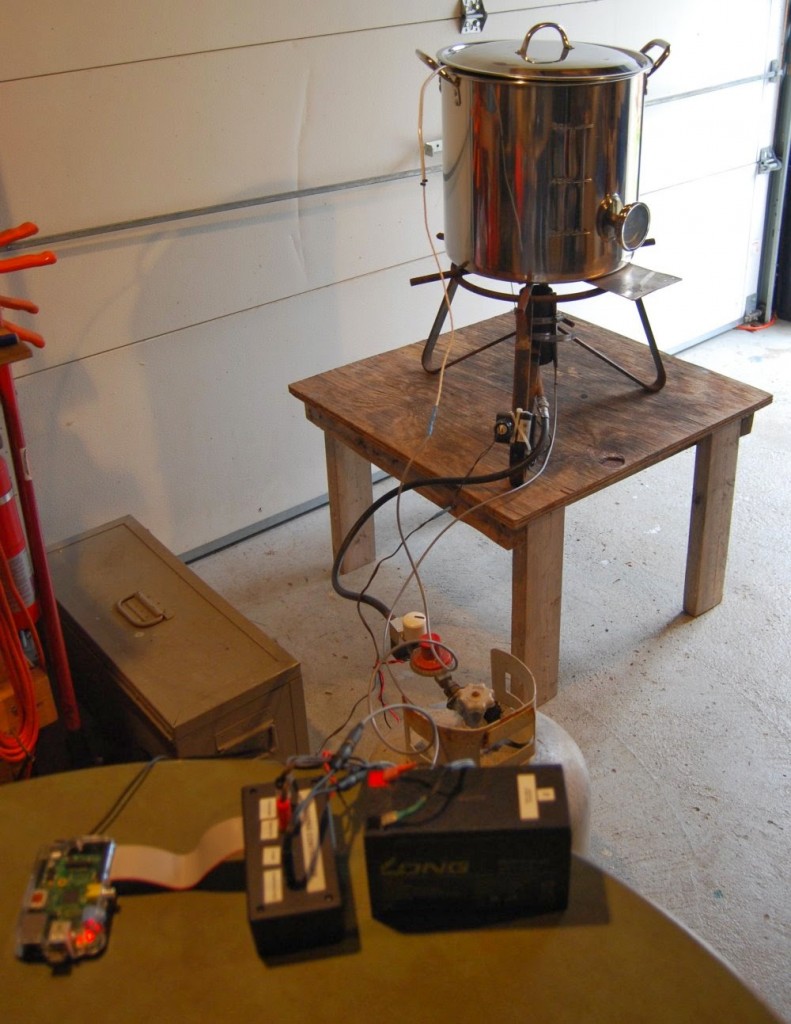| The office conversation this lunchtime went a bit like this: Me: “Two beer posts in a week is too much, isn’t it.” So I apologise for inflicting two posts about beer on you in three days: I promise not to mention fermentation at all next week. Ted Hale blogs at Raspberry Pi Hobbyist, where he concentrates on physical computing with the Raspberry Pi. His most recent project brings in another of his hobbies: home brewing. We like this not only because we like beer, but because think more Pi projects should employ propane. We’ve seen brewing projects where a Pi controls simple heating and cooling, but here, Ted uses a Pi here to control all the parts of the brewing method called partial mash: for this he needs to be able to:
Ted had problems over the build, including discovering that one of his sensors actually melted at high temperatures, finding that the igniter gave off so much electromagnetic interference that the I2C bus was unhappy. Being a seasoned hacker, he found ways around all the problems he encountered. The following paragraph, describing how he dealt with the interference, demonstrates why we think Ted is so great:
This guy is a musician with a hot tub who brews his own beer and hacks with the Pi for fun. We are in awe. There’s a writeup over at Raspberry Pi Hobbyist about how the whole setup comes together, and James, I expect you to have overhauled your entire home system over the weekend. |
A Semi-automated Technology Roundup Provided by Linebaugh Public Library IT Staff | techblog.linebaugh.org
Friday, March 28, 2014
Automated home brewing
Subscribe to:
Post Comments (Atom)

No comments:
Post a Comment